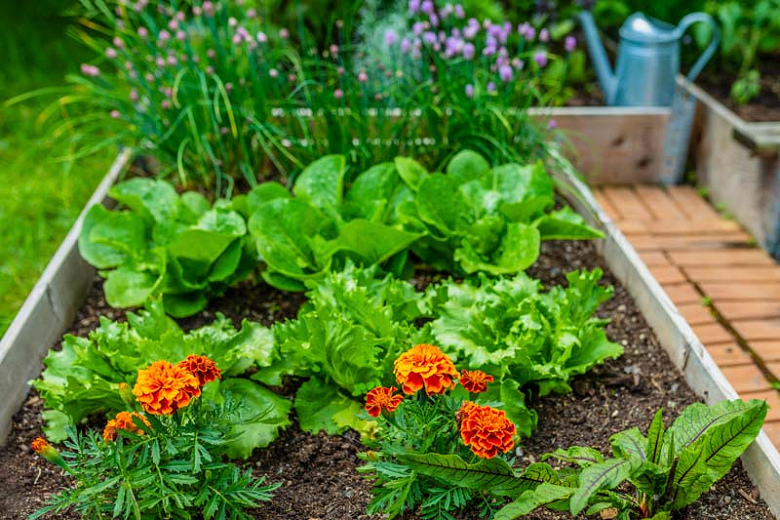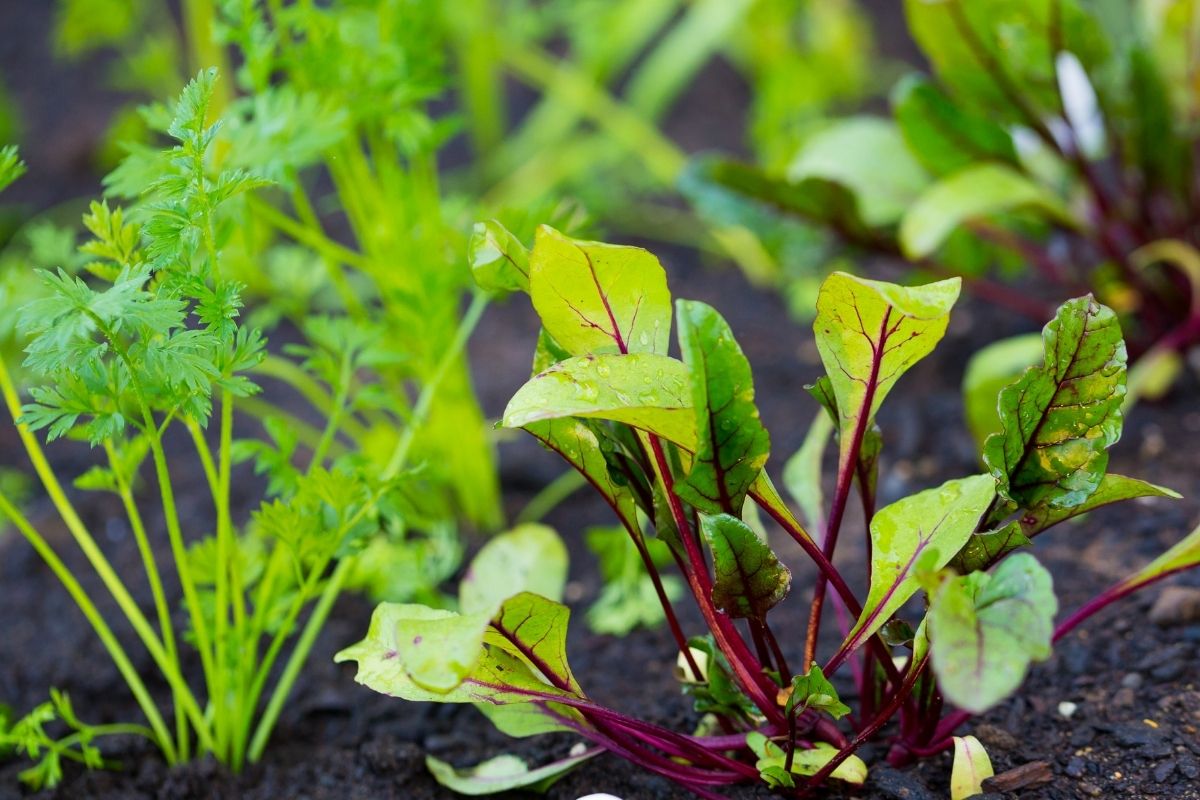The Beetroot Companion Planting Guide That Will
The Beetroot Companion Planting Guide That Will
Introduction
Beets are a delicious and nutritious vegetable that is easy to grow. They are also a great candidate for companion planting, which is the practice of planting different types of plants together to benefit each other.
There are many benefits to companion planting, including:
- Increased crop yield
- Improved plant health
- Reduced pest and disease problems
- Enhanced soil quality
In this guide, we will discuss the best companion plants for beets, as well as some plants that should be avoided. We will also provide tips on how to plant and care for beets in your garden.
The Benefits of Companion Planting
As mentioned above, there are many benefits to companion planting. Some of the most common benefits include:
- Increased crop yield: Companion plants can help to increase the yield of your beets by attracting beneficial insects, deterring pests, and improving soil quality.
- Improved plant health: Companion plants can help to improve the health of your beets by providing them with shade, windbreak, or other forms of protection. They can also help to suppress diseases and pests.
- Reduced pest and disease problems: Companion plants can help to reduce pest and disease problems by attracting beneficial insects, deterring pests, and providing a physical barrier to pests.
- Enhanced soil quality: Companion plants can help to enhance soil quality by adding nutrients, improving drainage, and suppressing weeds.
The Best Companion Plants for Beets
There are many different plants that can be grown as companion plants for beets. Some of the best include:
- Alliums: Alliums, such as onions, garlic, and chives, are excellent companion plants for beets. They help to repel pests and diseases, and they also add nutrients to the soil.
- Brassicas: Brassicas, such as broccoli, cabbage, and kale, are also good companion plants for beets. They help to deter pests and diseases, and they also help to improve soil quality.
- Legumes: Legumes, such as beans and peas, are nitrogen-fixing plants, which means that they add nitrogen to the soil. This can benefit beets, which are heavy feeders.
- Lettuce: Lettuce is a good companion plant for beets because it helps to suppress weeds. It also provides shade for the beet leaves, which can help to prevent them from bolting.
- Marigolds: Marigolds are known for their insect-repelling properties. They can help to deter pests such as aphids, beetles, and whiteflies from beets.
Plants to Avoid Planting with Beets
There are a few plants that should be avoided planting with beets. These include:
- Pole beans: Pole beans can shade out beet plants, which can stunt their growth.
- Chard: Chard is a member of the same family as beets, and it can compete with beets for nutrients.
- Spinach: Spinach can also compete with beets for nutrients.
Planting and Care
Beets are relatively easy to grow. They prefer full sun and well-drained soil. The soil should be pH neutral or slightly alkaline.
Beets can be planted from seed or from transplants. If you are planting from seed, sow the seeds 1/2 inch deep and 1 inch apart. If you are planting transplants, space them 2-3 inches apart.
Beets need regular watering, especially during the hot summer months. They also need to be weeded regularly.
Beets are typically ready to harvest 45-60 days after planting. The best time to harvest beets is when they are about 2 inches in diameter.
Conclusion
Beets are a delicious and nutritious vegetable that is easy to grow. Companion planting can help to increase your beet yield, improve plant health, and reduce pest and disease problems. By following the tips in this guide, you can enjoy a bountiful harvest of beets from your garden.
Beets are a delicious and nutritious root vegetable that can be enjoyed in many different ways. But did you know that there are certain plants that can help beets thrive? Companion planting is a gardening technique that involves planting certain plants together to benefit each other. For beets, some of the best companion plants include:
- Onions and garlic: These plants help to repel pests that can damage beets.
- Lettuce: Lettuce helps to shade the soil around beet roots, which can help to prevent them from becoming forked.
- Radishes: Radishes mature quickly, so they can be planted in the same row as beets to mark the row and loosen the soil.
- Carrots: Carrots and beets have different root systems, so they don't compete for resources.
- Brassicas: Brassicas, such as broccoli and cabbage, help to enrich the soil for beets.
If you're interested in learning more about beetroot companion planting, I recommend visiting Gardenia Inspiration. This website has a wealth of information on the topic, including a list of the best companion plants for beets, as well as tips on how to plant and care for them.
FAQ of beetroot companion
Q: What are some good companion plants for beets?
A: Beets are a cool-season crop that can be planted in early spring or fall. They are a good companion plant for many other vegetables, including:
- Onions: Onions help to repel pests that can damage beets, such as carrot flies and aphids.
- Lettuce: Lettuce helps to suppress weeds and shade the soil, which can help to keep beet roots cool and prevent them from bolting.
- Radishes: Radishes mature quickly and can be harvested before they compete with beets for space. They also help to improve the soil aeration, which can benefit beets.
- Brassicas: Brassicas, such as broccoli, cabbage, and kale, help to deter pests and diseases that can affect beets. They also help to improve the soil quality, which can benefit beets.
- Herbs: Herbs, such as mint, thyme, and rosemary, can help to repel pests and improve the flavor of beets.
Q: What are some plants that should not be planted near beets?
A: There are a few plants that should not be planted near beets, as they can compete for resources or attract pests. These plants include:
- Pole beans: Pole beans can shade beet roots and prevent them from developing properly.
- Spinach: Spinach can attract aphids, which can damage beets.
- Peas: Peas can compete with beets for nitrogen.
- Fennel: Fennel can produce a chemical that can stunt the growth of beets.
Q: What are the benefits of companion planting with beets?
A: There are many benefits to companion planting with beets. Companion plants can help to:
- Attract beneficial insects: Some companion plants, such as marigolds and nasturtiums, attract beneficial insects that can help to control pests.
- Repel pests: Other companion plants, such as onions and garlic, have strong scents that can repel pests, such as carrot flies and aphids.
- Improve the soil quality: Some companion plants, such as legumes, can fix nitrogen in the soil, which can benefit beets.
- Suppress weeds: Companion plants can help to suppress weeds by shading the soil or competing for resources.
Q: How do I choose companion plants for beets?
A: When choosing companion plants for beets, it is important to consider the following factors:
- The growth habit of the plants: Some companion plants, such as lettuce, have a spreading growth habit that can help to suppress weeds. Other companion plants, such as onions, have a more upright growth habit and will not compete with beets for space.
- The needs of the plants: Some companion plants, such as legumes, fix nitrogen in the soil, which can benefit beets. Other companion plants, such as marigolds, attract beneficial insects that can help to control pests.
- The personal preferences of the gardener: Some gardeners prefer to plant companion plants that have attractive flowers or foliage. Others prefer to plant companion plants that have medicinal properties.
Image of beetroot companion
- Image 1: Beets and cabbage. This is a classic companion planting combination. Cabbage attracts pests away from beets, and beets help to improve the soil for cabbage.

- Image 2: Beets and lettuce. Lettuce helps to suppress weeds around beets, and beets help to improve the soil for lettuce.

- Image 3: Beets and onions. Onions help to repel pests from beets, and beets help to improve the soil for onions.
- Image 4: Beets and beans. Beans fix nitrogen in the soil, which benefits beets. Beets help to shade the soil around beans, which helps to keep the soil cool and moist.

- Image 5: Beets and nasturtiums. Nasturtiums attract beneficial insects that help to control pests in the garden. Beets help to improve the soil for nasturtiums.
Post a Comment for "The Beetroot Companion Planting Guide That Will"